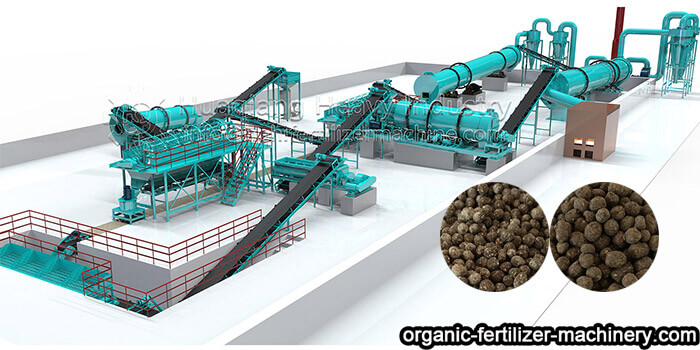As the core carrier of a bio-organic fertilizer production line, the operational stability of bio-organic fertilizer equipment directly affects production efficiency and product quality. Extending the equipment's service life can reduce production costs and minimize resource waste. Considering the equipment's working environment and operating characteristics, long-term maintenance can be achieved by focusing on the following key aspects:

Correct operation is the foundation of equipment longevity. Operators must undergo professional training, be familiar with the equipment structure and operating procedures, and strictly follow the instruction manual for starting, running, and stopping. When feeding materials, control the particle size and moisture content to prevent large hard objects or excessive moisture from entering the equipment, thus preventing wear on grinding parts and blockage of the conveying system. Monitor parameters such as current and temperature in real time during operation, strictly prohibit overloading, and immediately stop and inspect any abnormalities to prevent "operating with defects."
Daily maintenance is key to extending the equipment's lifespan. Establish a regular inspection system. Clean dust and residual materials from equipment surfaces daily, and check for loose fasteners and leaks in seals. Add appropriate lubricating oil to the transmission system and lubrication points weekly to ensure smooth operation. Conduct a comprehensive overhaul monthly, focusing on vulnerable components such as screens and blades, and replace worn parts promptly. Maintain maintenance records to create an equipment operation and maintenance file, providing a basis for future maintenance.
Handle malfunctions scientifically to avoid secondary damage. When equipment malfunctions, the cause must be investigated by professionals; blind disassembly is strictly prohibited. For common problems such as blockages, abnormal noises, and overheating, develop standardized handling procedures: for blockages, first disconnect the power supply, then use manual cleaning or specialized tools to unclog the blockage, avoiding forceful prying that could deform the equipment; abnormal noises are often caused by loose or worn components, requiring inspection of bearings, gears, and other critical parts, tightening or replacing them as needed. After troubleshooting, conduct a trial run; production can only resume after confirming normal operation.
Adapting to the environment and proper storage are equally important. The equipment should be installed in a dry, well-ventilated, and level location to avoid rust caused by damp environments and to keep it away from dusty areas to reduce wear and tear. When the equipment is to be shut down for an extended period, all residual materials must be thoroughly cleaned, easily corroded parts must be treated with rust prevention, dust covers should be installed, and the equipment should be run idle periodically to prevent parts from aging and sticking together.
Through standardized operation, meticulous maintenance, scientific troubleshooting, and environmental adaptation, the service life of bio-organic fertilizer equipment can be effectively extended, ensuring continuous and stable production and providing hardware support for the high-quality development of the organic fertilizer industry.